Dr Gareth Crispin presents a vision of intergenerational faith, where every person, from the youngest to the oldest, has a part to play in the music of God’s kingdom

Think of your favourite film soundtrack. Maybe it’s Star Wars, Superman or Harry Potter. Now think of a scene from that movie and imagine it without the music. It would fall flat, right?
In 2016, Stephen Spielberg presented John Williams with a lifetime achievement award from the American Film Institute. He said: “Without John Williams, bikes don’t fly and neither do brooms in Quidditch matches nor do men in red capes. There is no Force, dinosaurs do not walk the earth. We do not wonder, we do not weep, we do not believe.”
Music is that powerful. But this is no ordinary music; it’s the music of the symphony orchestra, the sound you get when a range of instruments come together in unity to produce something greater than the sum of their parts. A sound that moves you emotionally, physically even. A sound so powerful, rich and immersive that it dominates contemporary culture. It permeates films but also video games and contemporary pop music.
This power of the symphony is something that we are missing in the contemporary Church.
Imagine the instruments of an orchestra are people in a church, and the music of films is equivalent to faith. Now let’s consider what it might be like for the church to be symphonic.
This is a vision of church that seeks to curate spaces for the music of faith to be played in community - in a way that is powerful, rich and immersive and so much greater than the sum of its parts. In particular, it looks for a way to harness the power of the relationships between the generations.
Pinpointing the parallels
We can draw a parallel between:
- the individual instrument (eg the trumpet) with the individual person (eg a young person)
- groups of instruments (eg all the trumpets) with peer groups (eg all the young people)
- families of instruments (eg brass instruments) with families in churches
- the full symphonic orchestra with the full body of the church
Playing in these different settings is necessary and important. Young people learning to play the trumpet need to practice alone, to explore and experiment with their instrument. Similarly with faith, young people need to read scripture and pray at their own pace and explore faith for themselves.
But trumpets playing with other trumpets, that’s another level of sound - think of the fanfare at King Charles III’s coronation. Similarly, in church, peer group ministry is an important space where people can meet with others like them. Young people have common experiences that form their context for faith development; they benefit from shared understandings that are important to foster.
God desires faithfulness not performance
But there are limits to what a group of trumpets can do. In a brass band, there are greater opportunities – but also complications. Similarly, research suggests that young people (for better or worse) form faith most significantly in their family settings. Sometimes there might be a lack of understanding (and even respect) between different family members but, if those can be worked through, the power of family is undeniable.
Lastly, there is the full orchestra. This is the grouping that has the most incredible force but takes the most work to produce. Research has shown that when the whole church comes together it is more potent than anything else in terms of its formative power.
God’s great design
In 1 Corinthians 12, Paul compares the Church to a body made up of different parts: hands, ears, eyes etc. Each has a different function and, for the body to function, all parts need to work together. A body made up just of eyes is not a body, it’s just a freaky pile of eyes!
This is how God has designed the Church to be – although it isn’t always like this! Your body works because each part does its specific thing; you want a drink, you see it, but if your hand doesn’t reach out to pick it up then, no drink! Equally, the Church works when each part accepts (and is accepted by others for) its own part.
When a composer is writing a symphony, they hear each individual instrument in their mind. Each needs to play their different part to create harmony and power. If all instruments were violins where would the orchestra be?
A harmonious home
A key part of growing up is establishing grounds for identity, belonging and purpose. In times past, people were told who they were, where they belonged and what they should do. Now, the move towards individual agency means we can be, belong and do whatever we like. This is welcome in many ways, but self-constructed identities and belongings are unstable and unreliable.
Part of the good news of Jesus is that who we are, where we belong and what we are here to do is all wrapped up in the Church. Young people are members of the body, created to individually participate in their own specific way in Church life to the glory of God. The Church – at its best – provides the balance of individuality and collectivity needed to provide young people with a healthy sense of identity, belonging and purpose.
Woven into the story of scripture is a journey from natural family to spiritual family, pointed to in Ephesians 5:21-33. As Joseph Hellerman puts it: “Exchanging one family for another is at the very heart of what it means to be a disciple of Jesus.” This means it’s not a choice between family or church (brass section or orchestra), it’s family with a view to the Church. We’re used to thinking about the family being a launch pad into the wider world, teaching our children to budget and cook, for example, but perhaps we’ve overlooked the way in which it is also a launch pad into the church.
Leading the orchestra
As soon as you talk about bringing young people and the church together, some warn that they won’t be valued, they’ll be ignored or subsumed into the whole like the Borg in Star Trek; they’ll be looked down on by adults who don’t want to give up power. In the language of our analogy, not all members of the orchestra are considered equal.
Over the years, my wife has taught me that orchestras have a pecking order. The strings think they are better than the rest. The violins think they are better than the strings. The first violins feel they are better than the second violins, and the first violins have a leader who is called the leader of the whole orchestra (I’m not sure what everyone else thinks about that!)
The sound you get when a range of instruments come together in unity to produce something greater than the sum of their parts
And as for the noisy, uncouth trumpets, you get the feeling that they are tolerated rather than welcomed! It’s fine for them to join in, so long as they know their place. Unfortunately, this can also be the case in church, with young people tolerated so long as they know their place.
But God says this cannot be. In 1 Corinthians 8-10 Paul explains that eating meat sacrificed to idols is fine (because idols are nothing) but, nevertheless, we should refuse to eat it if another Christian has a problem with it. The explanation given is that the wiser and more knowledgeable Christian should accommodate the less knowledgeable brother or sister.
Paul gave up some of his rights as an apostle (for example to receive material support from churches) so that he might “win some”. In our churches, older Christians are wiser and have more knowledge of God (at least in theory) than younger Christians. Therefore, they should take responsibility for giving up how they think things should work.
Church leaders have authority, but instead of using that authority to do things as they would prefer, they should use it as a servant would, accommodating those without authority. Churches are governed differently - but one group that almost always has little power and authority are young people.
Creative conductor
If you’re like me, you may think that following sheet music is more science than art. The music tells you which notes to play, at which speed and how loud. In my mind, that’s a binary thing, right or wrong.
Well apparently, that is only true up to a point. There are wrong ways to play the music - a completely different note or twice as fast as directed - but the rest is interpretation. Composers never specify exactly how a piece should be played, and two orchestras playing the same piece may well sound different.
This all might sound very technical, but it is crucial because the music is not on the sheet, it is in the air – and the Bible is the same. In the story of scripture, we hear God’s plan is for the world, but how that story is played out varies in particular contexts. That doesn’t mean anything goes - the notes, order, speed and volume are all still prescribed - but exactly how it sounds is up for grabs.
Young people are members of the body, created to individually participate in their own specific way in Church life to the glory of God
This is where the conductor comes in. Before any public performance, conductors lead rehearsals and bring unity to the diverse group of players and instruments, so that they can play as one. They lead the interpretation so that it remains faithful to the music and the composer.
The conductor of all God’s churches is God himself. As we seek to faithfully play the music of faith in our church communities, the Holy Spirit equips us for mission and ministry in the real world through a faithful improvisation of the Bible. Here, of course, the analogy breaks down.
Human conductors do not have perfect knowledge of the composer’s intentions. The Holy Spirit, however, not only guides us in our interpretation of the Bible but inspired its writing - and so has perfect knowledge of the intention behind it. In this sense, unlike in an orchestra, the Holy Spirit will never suggest an interpretation which is inconsistent with scripture.
Giving it a go
Lastly, orchestras don’t have to be professional or play for the public for their music to be worth playing. As Christians, we do all things for God (1 Corinthians 10:31) so ultimately, we play the music of faith in our churches for the glory of God. He is our primary audience. However, there are secondary audiences, including the players themselves.
Amateur musicians play music because they enjoy it or think it’s good for them. Similarly, the symphonic church plays the music of faith for itself, for its participants. Remembering both audiences is significant because it helps to get away from the unhelpful prioritisation of performance.
It’s great to improve (in church life this will mean glorifying God more in what we do and think) but we need to remember that God desires faithfulness not performance. As youth, children, parents and other adults in the church imperfectly practice and play together, we can rejoice in the formative nature of that rather than solely focusing on the outcomes.
Of course, if a child or young person inadvertently plays a note that is not in the music, some compassionate discipleship may be required - but also celebration. They are at least playing!
Working on the symphonic church will take time, energy and a generous spirit. But with willing leaders and an openness to the Spirit, we can work towards a faithful interpretation of the sheet music as we play the music of faith together to the glory of God and the edification of all.
This vision might not mean that your church plays the most highbrow pieces; it might be more Pirates of the Caribbean than Mozart’s ‘Symphony no. 41’ and, technically, it might not be done very well. But it is likely to be a beautiful thing and will transform the faith lives of everyone – including our children and young people.
The Symphonic Church (Grove Books) is available now
For support and resources in raising faith in the next generation visit premiernexgen.com








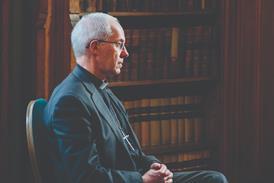
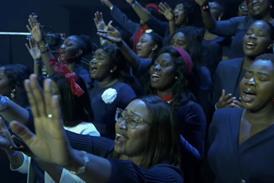
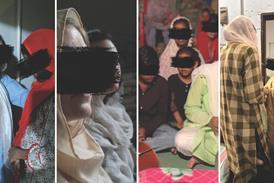
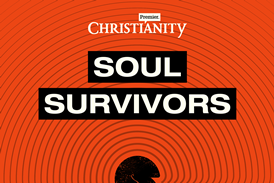




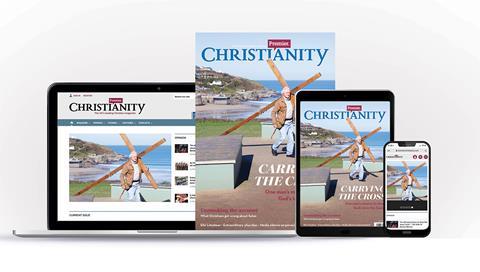



















No comments yet